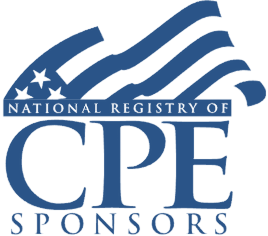- videocam On-Demand Webinar
- calendar_month June 20, 2023 @ 1:00 p.m. ET./10:00 a.m. PT
- signal_cellular_alt Intermediate
- card_travel Tax Preparer
- schedule 110 minutes
IRC 962 Election for Corporate Tax Rate on Subpart F Income
Avoiding GILTI Complexities, Claiming Indirect Deemed Paid Foreign Tax Credits, and NOL Carrybacks
Welcome! Save 30% on all CLE, CPE, and Professional Skills webinars, plus 15% off any annual pass with code HOLIDAY25
About the Course
Introduction
This course will guide tax advisers in making a Section 962 election for an individual, trust, or estate to be taxed at corporate rates on foreign-sourced income under Section 951(a) and global intangible low-taxed income (GILTI) treated in the "same manner" as Subpart F inclusions. The panel will show how to identify income eligible for a 962 election, detail the potential tax benefits (including indirect foreign tax credits), and discuss potential hazards to making the election.
Description
Significant changes to the international taxation of controlled foreign corporations (CFCs) require tax advisers to engage in proactive planning to minimize the tax liability on previously deferred foreign income. For some individual, trust, or estate taxpayers holding shares in foreign corporations, an election under Section 962 to have qualified foreign income taxed at the corporate rate may make sense given the cost and complexities of the new GILTI regime on holdings in CFCs.
Section 962 allows individuals or fiduciaries to be taxed at domestic corporate rates on any amounts included as gross income under IRC 951(a), including presumable GILTI because of Section 951A(f)(1)(A), rather than at potentially higher individual or fiduciary income tax rates. An election under Section 962 can provide benefits specific to trusts and estates, given the compressed fiduciary income tax rates applicable to such taxpayers. Taxpayers making the election may also claim an indirect or deemed paid foreign tax credit under Section 960. Under the GILTI rules, in Section 960(d), only domestic corporations can claim indirect foreign tax credits.
There are several areas of risk and uncertainty surrounding the 962 election and tax advisers to individuals should proceed carefully in evaluating whether to elect domestic corporate tax treatment. When an electing taxpayer receives a distribution of earnings previously included in gross income under 951(a) or 951A(a), such taxpayer must include in gross income any distribution amount exceeding the amount of U.S. income tax paid at the time of a Section 962 election, which may result in double inclusion of previously deferred income.
Listen as our experienced panel provides a practical guide to the planning and compliance challenges of making a Section 962 election for Subpart F income and GILTI.
Presented By

Mr. Maguina focuses his practice on a broad range of domestic and international tax matters, such as mergers and acquisitions, corporate restructurings, private equity funds and tax controversies.

Mr. Samtoy’s practice specializes in international tax compliance and consulting services, with a focus on individuals, closely-held businesses, and hedge funds. He has particular expertise in structuring and reporting foreign manufacturing arrangements and foreign holding companies, and is experienced in foreign asset disclosure requirements, as well as foreign trust and estate reporting.

Mr. Skinner focuses his practice on U.S. international taxation, with a particular emphasis on tax planning and international corporate transactions. He has broad experience in international tax issues for U.S. corporations, foreign corporations, and high net-worth individuals, and has represented clients across a variety of industries. He teaches international taxation as an adjunct professor in San Jose State University’s MST program, and speaks and writes frequently on international and corporate tax issues.
-
BARBRI is a NASBA CPE sponsor and this 110-minute webinar is accredited for 2.0 CPE credits.
-
BARBRI is an IRS-approved continuing education provider offering certified courses for Enrolled Agents (EA) and Tax Return Preparers (RTRP).
Date + Time
- event
Tuesday, June 20, 2023
- schedule
1:00 p.m. ET./10:00 a.m. PT
- GILTI regime and expansion of deemed inclusions of foreign earnings
- Section 962 election
- Eligible income under IRC 951(a) and 951A(f)
- Claiming IRC 960 indirect/deemed paid foreign tax credits
- The tax rate on elected foreign income inclusion
- Treatment of distributions where amounts previously included in gross income at the time of the election
- Where a Section 962 election may create higher tax after a deferral
- Impact of Section 962 elections on trusts and estates
- Who may make the Section 962 election?
- Impact of compressed fiduciary tables on effective tax rates
- Making the election
- Calculating and reporting the tax
- Alternatives to the Section 962 election
The panel will discuss these and other important issues:
- What types of income are eligible for corporate tax rates under a Section 962 election?
- How to calculate the tax impact of subsequent distributions of amounts included in gross income under Section 962 election
- Determining when a Section 962 election could result in tax increases
- When do NOL benefits outweigh the benefit of making this election?
Learning Objectives
After completing this course, you will be able to:
- Determine what types of income are eligible for corporate tax rates under an IRC 962 election
- Ascertain how to calculate the tax impact of amounts included in gross income under IRC 962
- Establish whether an IRC 962 election is beneficial or could result in tax increases
- Recognize the treatment of Subpart F inclusions, GILTI, and tax liability on previously deferred foreign income
- Verify that the IRC 962 election is correct and follow the new law's provisions regarding IRC 962 tax reporting
- Field of Study: Taxes
- Level of Knowledge: Intermediate
- Advance Preparation: None
- Teaching Method: Seminar/Lecture
- Delivery Method: Group-Internet (via computer)
- Attendance Monitoring Method: Attendance is monitored electronically via a participant's PIN and through a series of attendance verification prompts displayed throughout the program
- Prerequisite: Three years+ business or professional experience at mid-level within the organization, preparing complex tax forms and schedules. Specific knowledge and understanding of international taxation, deferred foreign-source income, earnings and profits, controlled foreign corporations, specified foreign corporations, and repatriation of deferred foreign earnings; familiarity with accumulated cash and non-cash retained earnings and profits and netting of earnings and profits positions.

BARBRI, Inc. is registered with the National Association of State Boards of Accountancy (NASBA) as a sponsor of continuing professional education on the National Registry of CPE Sponsors. State boards of Accountancy have final authority on the acceptance of individual courses for CPE Credits. Complaints regarding registered sponsons may be submitted to NASBA through its website: www.nasbaregistry.org.

BARBRI is an IRS-approved continuing education provider offering certified courses for Enrolled Agents (EA) and Tax Return Preparers (RTRP).

BARBRI CE webinars-powered by Barbri-are backed by our 100% unconditional money-back guarantee: If you are not satisfied with any of our products, simply let us know and get a full refund. Contact us at 1-800-926-7926 .
Unlimited access to premium CLE courses:
- Annual access
- Available live and on-demand
- Best for attorneys and legal professionals
Unlimited access to premium CPE courses.:
- Annual access
- Available live and on-demand
- Best for CPAs and tax professionals
Unlimited access to premium CLE, CPE, Professional Skills and Practice-Ready courses.:
- Annual access
- Available live and on-demand
- Best for legal, accounting, and tax professionals
Unlimited access to Professional Skills and Practice-Ready courses:
- Annual access
- Available on-demand
- Best for new attorneys
Related Courses

Calculating and Reporting Foreign E&P: Categorizing PTEP, Form 5471 Schedules H, P & R, Foreign Tax Credits
Friday, January 30, 2026
1:00 p.m. ET./10:00 a.m. PT

Family Office Tax Update: Foundational Principles, OBBBA Opportunities, Trade or Business Criteria
Thursday, February 26, 2026
1:00 p.m. ET./10:00 a.m. PT
Recommended Resources

How CPE Can Bridge the Gap Between What You Know and What You Need to Know
- Career Advancement


